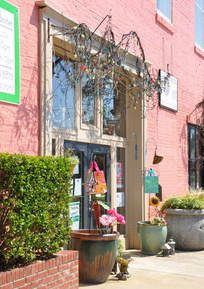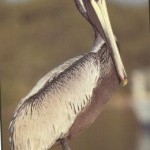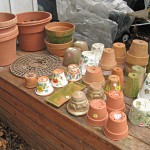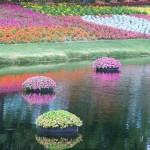What Backyard Birdhouses attract the wild birds In South Carolina!
Most people stare in disbelief when they learn of the number of birds that annually visit their Lancaster, South Carolina climate.
Many little suspect, what rare and elegant visitors from Mexico, from Central and South America, and from the islands of the sea, are holding their reunions in nearby neighborhoods.
 The Secrets Of Attracting Wild Birds To Your Yard:
The Secrets Of Attracting Wild Birds To Your Yard:
The life of birds, especially of our migratory song-birds, The home instinct is strong in birds – once they have a home they will return to it every year.
The Needs of Birds and how PurpleRoosterOnline can help you find the right birdhouse in South Carolina;
Birds needs are simple but must be provided in the way that various species desire and require. If you follow a few rules you should have no difficulty in supplying what is needed to attract wild birds to your yard.
The chief needs of birds have to do with the;
- securing of food and water,
- rearing of their young,
- protection at all times from the dangers to which they are exposed
- You can learn to identify wild birds and their song, and turn your yard into a bird sanctuary!
There are many bird clubs in South Carolina that can help you.
It takes little money – precious little when you consider the many hours of enjoyment you gain – for Mother Nature to send the birds to you!
From your friends at PurpleRoosterOnline
Continue reading What Backyard Birdhouses attract the wild birds In South Carolina! »
The Rare Birds of South Carolina
The bird was last seen fly YELLOW-NOSED ALBATROSS was on the beach at Cape Hatteras Point oning out over the ocean to the southeast after being routed by
From your friends at Purple Rooster..
The Right Birdhouse in Lancaster South Carolina
When mounting a wooden bird house
Be sure to look at our extensive bird house collection at the Purple Rooster Online in addition to placement for a specific species,
consider accessibility for convenience and safety when monitoring and cleaning.
Be sure houses are securely mounted.
Don’t crowd a yard with nestboxes. Wrens may build nests in several boxes before selecting one, but too many boxes may deter other birds.
Bluebird nest boxes should be about 100 yards apart although swallow boxes can be placed within 10 yards of the bluebird boxes and make good neighbors as they are less intimidated by sparrows.
Woodpeckers, Chickadees and Owls do not migrate south in winter and may use nestboxes in winter. Mounting in the fall or winter will give the box a chance to weather before spring.
Place 1 or 2 inches of dry wood chips in the boxes intended for Woodpeckers, Chickadees and Owls. Sawdust will not ventilate and dehydrate as well as chips and chips are easier for birds to rearrange or pack in and out. Fill a box intended for a Flicker. They will excavate the chips.
For all other birds, no nesting material or food should be placed in a bird house. Don’t put bird houses near bird feeders. Face away from prevailing winds and out of prolonged direct sunlight.
Hanging/swinging birdhouses are preferred by some species and rarely used by others. Wrens like them. Chickadees and Tree Swallows will use them occasionally.
From Your Friends at Purple Rooster Online
Continue reading The Right Birdhouse in Lancaster South Carolina »
2 comments on The Right Birdhouse in Lancaster South Carolina »
What Do South Carolina Birds Eat?
Insects
Shop for your favorite bird feeder at the Purple Rooster
Misconceptions
Weird Fact
Significance
The purple martin is the biggest swallow that lives in the United States. In the eastern part of the country, this bird lives almost solely in birdhouses that are set up by citizens and conservationists.
Like all swallows, the purple martin is an excellent flier, using this ability to both eat and drink.Pelicans are also big South Carolina birds that hang out on the coast and they eat fish and are friendly if you feed them fish Insects.
The purple martin eats flying insects that it captures while in flight. It is capable of eating thousands of flying insects, catching them with its bill as it glides through the air.
TypesSpecies of bugs that wind up on the purple martin’s menu are moths, butterflies, common houseflies, grasshoppers and dragonflies, which are a favorite food.
MisconceptionsMosquitoes make up as little as 2 percent of a purple martin’s diet, despite claims by birdhouse companies that exaggerate how many of the pests martins eat.
Fun Fact
Purple martins also eat honeybees, but only those that occasionally fly high enough to become prey; martins do the majority of their hunting for insects quite high off the ground.
SignificanceMany people will put out oyster shells and eggshells on a raised platform near a purple martin colony; the birds eat them quickly for an excellent source of calcium.
Sincerely,
From your friends in Lancaster, South Carolina, Purple Rooster.
South Carolina is full of beautiful birds!
Do you have the appropriate backyard birdfeeder to attrack the rare yellow bellied sapsucker?
These are some of the most colorful and strange birds you will see from South Carolina coasts to urban city area.
The song of the Cardinal is o beautiful it is almost enchanting. Get the appropraite home for it at the Purple Rooster.
The Pelican is a very bold creature, he will come quite close to you if you have fish. He will hardly take his eyes off you, being quite comic in his moves,he will amuse you for sure.
On to more of the species you will see in the South. The large birds along the coast seem to be very colorful.
The Great blue Heron seen up and down the east coast, the Green Back Heron, a much shorter legged variety.
These birds spend their time in marshes and coastal inlets looking for food. The smaller species, Sandlings, Terns and Gulls tend to stay closer to the open bodies of water. Roaming about the shore at low tide to grab whatever creatures aren’t quick enough to make
it back to the sea on the outgoing tides.
As you walk along the South Carolina shore line this fall it seems there are many differenet kinds of sand birds Plovers, pipers and terns.
They stay in large groups poking thier long thin bills into whelk and clam holes in the sand. I noticed that they stand on one leg and hop most of the time.
They rage in size from a few inches in height to about a foot. It is so odd to see he Gulls do a “tap dance” in one spot trying to stir up the soft sand so to eat small sea creatures that are buried in the sand. The beaches are a playground for the birds.
Sincerely,
From your friends in Lancaster, South Carolina, Purple Rooster.
Continue reading South Carolina is full of beautiful birds! »
The state of South Carolina, 424 Species of Birds
The state of South Carolina, 424 species of birds
With this many species of birds few homes can beautify the natural beauty of our marvelous state with a birdhouse
from the Purple Rooster.
See our wonderful birdhouse display. This number includes the bird species that have been sighted in South Carolina and
are believed to be of wild origin. In addition, sixteen species are confirmed as being sighted in South Carolina but whose wild origin has been questioned.
The South Carolina Bird Records Committee maintains the records for bird sightings in South Carolina and produces the list
used by most birders. Help protect the 424 species of birds by protecting them with a birdhouse from your Lancaster Purple Rooster.
To objectively evaluate species recorded in the state. The committee votes on the validity of new records of bird species in the state.
The committee last met in 2008; since then at least five birds with the potential to be first state records were observed in South Carolina.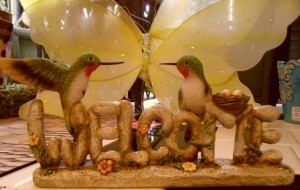
On September 18, 2008, a likely Gray Flycatcher was reported in South Carolina. Also on September 18, 2008, three potential Wandering Tattlers were reported along the coast. On November 22, 2008, a Bronzed Cowbird was reported in Charleston, South Carolina. On February 8, 2009, a Tropical Kingbird was reported in South Carolina. On January 5, 2010,
a California Gull was reported in Horry County, South Carolina.
These records will be reviewed by the South Carolina Bird Records Committee to determine their
validity.
Join the South Carolina bird lovers by joining the committee.
Continue reading The state of South Carolina, 424 Species of Birds »
Which Garden Planters and Flower Pots Work Best
Everyone has a different opinion on which Garden Planters and Flower Pots work best.
When it comes to making your yard, patio, deck, or home feel
personalized and inviting, nothing does the job quite like well-maintained flower
pots and planters. Purple Rooster has a very good variety of planters
Inside your home, of course, pots, urns, and planters are the only
way to keep your plants.
But outside, in Lancaster, South Carolina, a nice mixture of planters and natural soil
plantings can really bring a yard to life. Spring time is usually when you get your
annual flower pots ready to go.
During the winter months, dead plants and flowers should
be removed from pots, and soil should be dumped as well, though many people add
fertilizer and nutrients to their used potting soil and re-use.
If you have clay, terra cotta, or ceramic pots and planters, they should be emptied and brought indoors during the winter.
Winter freezing and thawing can crack clay materials leaving you with broken and
crumbling planters in the spring. In this guide, we will get some ideas on where to
find and how to use pots and planters in your gardening inside and outside the home –
and check prices and where to buy.
Use a big container. Bigger is better. A larger pot or container holds moisture longer and also
provides more space for the plants’ roots. The healthier the root system, the healthier your flowers will be.
The container must have a drainage hole in the bottom to allow excess water to escape.
Use fresh, top quality soil mix or potting mix formulated for container plants. Most of these are soil-less,
meaning they are based on milled sphagnum peat moss or bark combined with sand, perlite or vermiculite. Some mixes
contain a slow release fertilizer; some contain water holding crystals to lengthen the time between waterings.
Sincerly,
Your Friends at www.PurpleRooster.com
Continue reading Which Garden Planters and Flower Pots Work Best »
The Best Flower Pots in South Carolina
Which Pot is Right For You?
Selecting the right pot for your garden is an essential part of raising beautiful flowers from seeds. Choosing plant pots and containers is something we may not give much thought about, however, there are a surprising number of options! Picking out the best types can make a big difference to the success of young plants. Here is a brief list comparing the pros and cons of different pot materials. After reading this post, you’ll know which pot is right for you!
Terra Cotta Pots
These pots are traditional and decorative, but porous and dry out quickly. Many are not frost-resistant. Stone and Concrete terra cotta pots are good for maintaining soil temperature and moisture. They heat up, but also insulate. Both can be left out over winter, but not great choices if the planter needs to be moved. They’re great if you need a planter that pets can’t knock over, and you don’t plan on moving your plant.
Wood & Metal Pots
Wood pots have good water retention and help nurture your flowers. Hard woods are better preventions against rot, but all wood planters can be treated with preservatives. Look for good construction and joints, since wood will shrink and expand with moisture. They’re also okay for winter planting.
Metals pots are generally heavy, so they are excellent for stabilizing tall plantings. They don’t just dry out, they heat up and need frequent watering or the roots could bake. Often a good choice for winter containers.
Synthetic Pots
Fiberglass and resin: They are light, durable, inexpensive and often frost-resistant.
Plastic Pots
These pots are lightweight and moisture conserving. The semi-flexible pots work best for cold winters and are also good as liners. Plant directly into the plastic pot and then slip the plastic pot into the more decorative container. You get the benefits of both.
Please join us at our next blog on
South Carolina Gardening
Which Flowers Survive Best in South Carolina
- Begonia – These flowers can be either grown in the shade or in the full blown sun! Wax begonias withstand drought and heat better than other begonias, although they definitely prefer moist, well-drained, fertile soil.
- Evergreen – Because of its fleshy leaves and swollen roots, Evergreens has a rare ability to stay fresh and alive, long after having been uprooted. These can survive anywhere from indigenous to temperate zones, to banks in the mountains.
- Golden Carpet Sedum – Highly diverse, drought-tolerant annuals and perennials, Stonecrops range from tiny, hardy, rock garden succulents to 2-foot-tall perennials. These flowers are durable, and can grow in the rough South Carolina soil.
- Indian Grass – No garden would be complete without at least one type of ornamental grass, and Indian grass does the trick for southern gardens. Growing up to five feet tall, the blue-green blades start growing in the spring with a large plume of seed heads appearing in late summer, offering a great food source for birds and other wildlife. This plant grows well in almost any soil although it thrives in well-drained soils in sunny areas.
- Cardinal Flower – Preferring moist climates such as those offered along streams and creeks, this bright red flower adds a much-needed riot of color to shady areas of your garden. Growing up to four feet tall with blooms that last from mid-summer through the fall, the plant prefers moist, well-drained soil in light shade or partial sun. With its long bloom time, this plant works perfectly to attract hummingbirds.
PS Be sure to join us on our next blog about The best flower pots in South Carolina!
